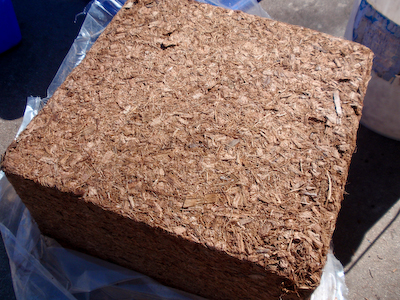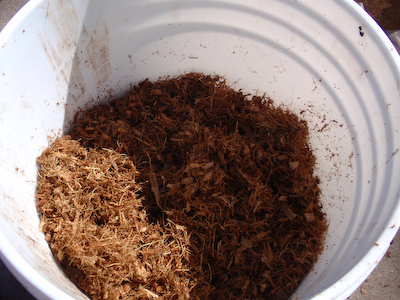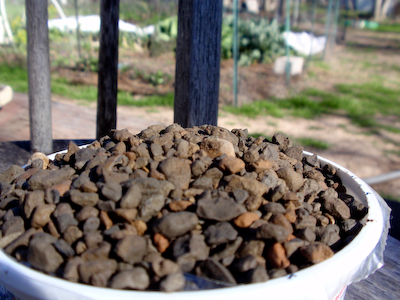Yesterday I decided that it was time to empty the bottom tray of my worm bin and mix up some potting soil.
When I managed the greenhouse at the Tsyuhehkwa Center on the Oneida reservation I would make a potting mix that consisted primarily of one part worm castings to two parts sphagnum moss. I am now trying to avoid sphagnum and use coconut coir in this mix.
Here is the recipe that I used for this batch:
1/3 five gallon pail worm castings
2/3 five gallon pail coconut coir
1 quart expanded shale
Handful Azomite (a “rock dust” mineral powder)
2 TBS micorrhizal inoculants
First, I removed the castings from the bottom tray of my “Worm Factory.” I only needed to fish out a couple of stray worms as most had already migrated upwards to the next bin. The castings were a little on the wet side. I should probably be adding more dry fibrous materials to the steady diet of coffee ground and tea leaves that I feed my worms.
Next, I broke off some of the coir from a large compressed block. The coir expands to about three times its volume when broken up and mixed with a little water. This particular coir had mostly long fibers. Coir that has been ground to a finer consistency is also available.
Coir Block
Moistened Coir
To this mix I added a quart of expanded shale. I used this because I happened to have it on hand. I could have also used coarse sand, bird’s eye gravel, or decomposed granite. I also added some rock dust for trace minerals.
Expanded Shale
After reading Teaming with Microbes by Jeff Lowenfels and Wayne Lewis I decided to experiment with a micorrhizal inoculant. Some of these organisms may have already been present in the worm castings, but the particular inoculants that I used claimed to have twenty-five distinct species.
After a thorough mixing, I felt that the batch had too much coir (I don’t think that it was done expanding when I added it). Luckily I had a small bag of purchased worm castings in the house that I added to fix the consistency.
I often add kelp meal to my potting soil as well as a small amount of granulated organic fertilizer. In my current system I water my vegetable transplants with liquid seaweed and occasionally fish emulsion, so I didn’t feel the need for the added fertility. I would have also added some composted rice hulls if they would have been available to me.
When I worked with Bruce Blevins at Nokomis gardens, we would make different kinds of compost piles for different soil mixes. I don’t have that luxury right now, but I have found the worm casting mix to give me good results.
Finished Mix




